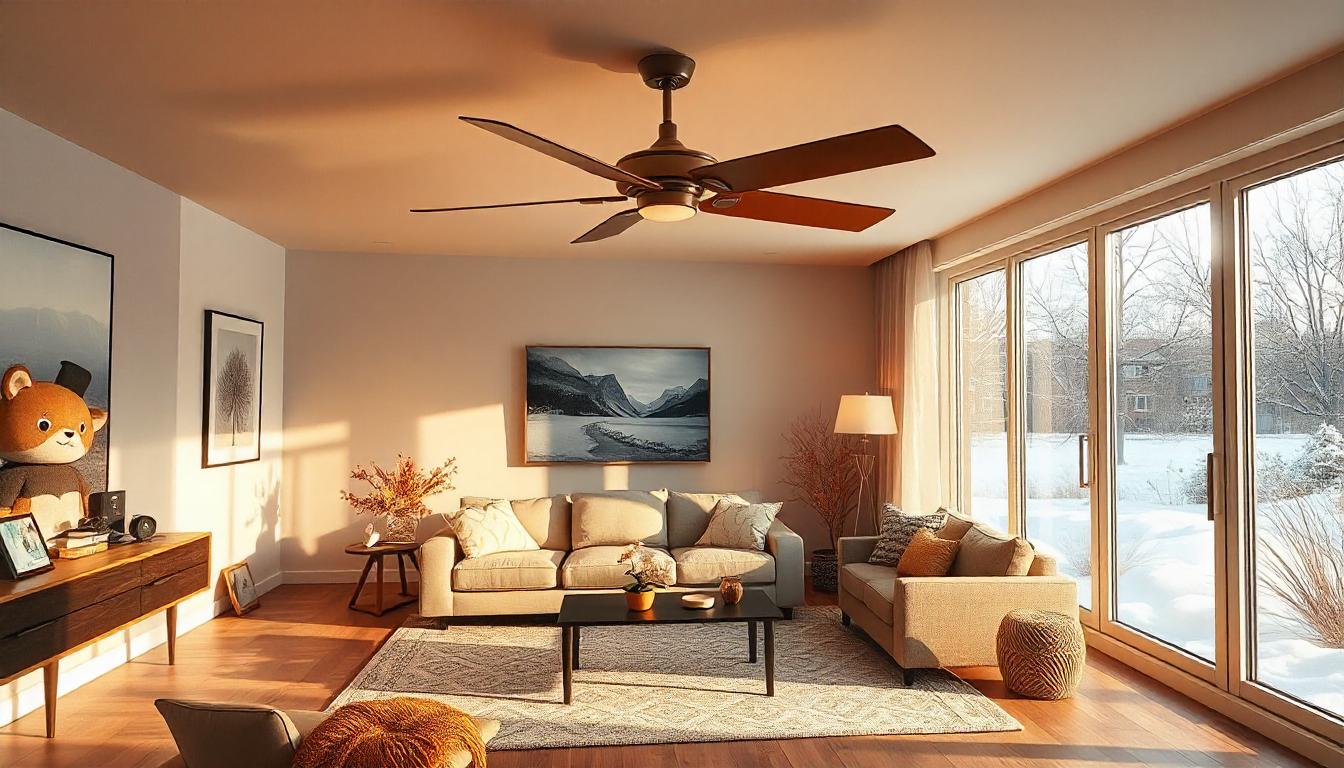Smart fans help save energy in several ways, leveraging advanced technology and innovative design features to optimize energy usage while maintaining comfort. Here’s a detailed breakdown of how smart fans achieve energy savings:
1. Energy-Efficient Motors
Smart fans often use DC motors instead of traditional AC motors. DC motors are significantly more energy-efficient, consuming up to 70% less energy while providing similar or even better performance. For example, the Aeratron AE2+ has an impressive efficiency rate of 390 CFM/watt (cubic feet per minute per watt) on high speed and 571 CFM/watt on low speed. This means they use less power to produce the same amount of airflow, resulting in lower electricity bills.
2. Smart Sensors and Automation
Many smart fans come equipped with sensors that automatically adjust the fan speed based on the room’s occupancy and temperature. For instance, the Big Ass Fans Haiku L Series features a SenseMe motion sensor that turns the fan on or off based on movement in the room. This ensures that the fan only operates when needed, reducing unnecessary energy consumption.
3. Voice and App Control
Smart fans can be controlled via voice assistants (like Amazon Alexa, Google Assistant, and Apple Siri) or mobile apps. Users can adjust fan speeds, turn the fan on or off, and even set schedules remotely. This convenience encourages users to manage their energy usage more effectively. For example, users can turn off the fan when they leave the house or adjust the speed based on the weather conditions.
4. Integrated LED Lighting
Smart fans often come with LED lights that are highly energy-efficient. LED lights consume significantly less power compared to traditional incandescent or fluorescent bulbs. For example, the Smafan Icebreaker 60-inch smart ceiling fan features a 4000K LED light kit that provides bright illumination while consuming only 40 watts. Additionally, LED lights have a longer lifespan, reducing the need for frequent replacements.
5. Customizable Settings and Scheduling
Smart fans allow users to set schedules and timers for the fan and light to turn on or off at specific times. This feature ensures that the fan is not running when it is not needed. For example, users can set the fan to turn off after a certain period or adjust the speed based on the time of day. The Lumary RGBAI fan includes a timer function that allows users to set the fan and light to turn off after 1 or 4 hours.
6. Reverse Flow for Winter Operation
Many smart fans have a reverse flow option that helps distribute warm air more efficiently during the winter. By reversing the direction of the fan blades, warm air that rises to the ceiling is pushed back down into the living space. This reduces the need for additional heating, thereby saving energy.
7. Airflow Efficiency
Smart fans are designed to maximize airflow efficiency. The Monte Carlo Maverick has a blade pitch of 13 degrees, which is optimized for airflow, delivering an impressive 246 cubic feet per minute (CFM) per watt. Efficient airflow means the fan can provide the same level of comfort while using less energy.
8. Energy Star Certification
Many smart fans are Energy Star certified, meaning they meet strict energy efficiency guidelines set by the U.S. Environmental Protection Agency. Energy Star-rated fans are 40% more efficient than conventional fans. For example, the Minka Aire Sleek is Energy Star rated and costs just $5 annually to run (excluding the light).
9. Reduced HVAC Load
By providing effective air circulation, smart fans can reduce the load on heating and cooling systems. When used in conjunction with air conditioning, fans can help maintain a comfortable temperature with the thermostat set a few degrees higher, thereby reducing energy consumption. According to Energy Star, this can result in significant savings on cooling costs.
10. Learning Capabilities
Some advanced smart fans have learning capabilities that adapt to user behavior. They can learn when the user is most likely to be home and adjust settings accordingly. This intelligent automation ensures that the fan operates only when needed, optimizing energy usage.
Conclusion
Smart fans are a significant step forward in energy-efficient home automation. By combining energy-efficient motors, smart sensors, integrated LED lighting, and customizable settings, they offer a powerful solution for reducing energy consumption while maintaining comfort. Whether through automated controls, remote management, or optimized airflow, smart fans help users save energy and reduce their environmental impact.
